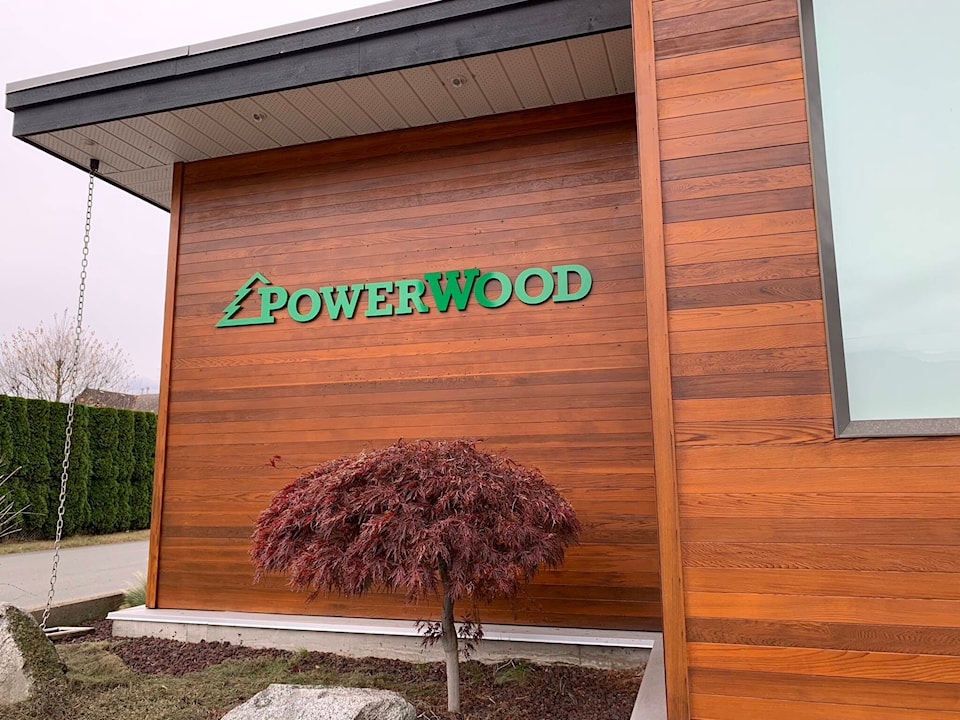Even as old-growth logging declines, wood manufacturers like Agassiz’s own PowerWood could see increased manufacturing possibilities. However, that potential expansion comes with risk.
According to the province’s recently released Old Growth Strategic Review, the government’s vision for the future of forestry includes more focus on value-added, local manufacturing, which would potentially create more jobs for every tree harvested.
PowerWood CEO Jake Power told The Observer that manufacturers like PowerWood, who process raw wood into any number of products, would see increased activity as more manufacturing and processing could take place in B.C. The quandary comes when less logging produces less wood for all levels of processing and manufacturing.
RELATED: Surrey cedar processor PowerWood moving to Agassiz
“If there’s a reduced harvest, there’s a reduced availability of supply; the pie is shrinking,” Power said. “The question is what percentage of the (wood supply) could stay here in B.C. and be manufactured by businesses in B.C. If you want to see more manufacturing here, there needs to be policy decisions that push the (wood) fiber into manufacturing in B.C.”
According to the Old Growth Strategic Review, old-growth logging has declined by 42 per cent from an estimated 65,500 hectares in 2015 to 38,300 hectares in 2021.
Old growth is defined as trees that are more than 250 years old on the coast and 140 years and older in the Interior, depending on the type of forest. The harvested wood in 2021 represented 0.3 per cent of the estimated 11.1 million hectares of old growth in the province.
“Our vision for forestry is one where we better care for our most ancient and rarest forests, First Nations are full partners in sustainable forest management, and communities and workers benefit from secure, innovative jobs for generations to come,” stated B.C.’s Minister of Forests Katrine Conroy. “The latest numbers show that B.C. is on the right track as we work to develop and implement new long-term solutions for better managing, preserving and sharing the benefits of our forests.”
The province-wide, value-added market uses about 10 to 15 per cent of the harvested wood per year; Power said if that percentage were to increase to 20 to 30 per cent would increase certainty and therefore increase potential growth for the industry. If that supply was guaranteed, Powerwood could go from 50 to 150 employees, by Power’s estimation.
Although the logging industry does undoubtedly have an impact on the environment, Power said the industry has just as much of a potential for providing green solutions as industries gravitate toward reducing carbon emissions.
“You look at building products, carbon emissions from building a house out of wood versus building it out of steel or concrete, there’s no contest,” he said.
Outside of construction, Power said there are greener ways to harvest wood and to manufacture.
RELATED: PowerWood’s grand opening celebrated in Agassiz
“If we’re trying to do a product in New Zealand or Australia, if we want to ship them raw material to manufacture, it might be three (shipping) containers, but if we manufacture here, it might be one container,” he said. “The reality is a lot of the market for our resources is in foreign markets. The best way we can take advantage of that resource for the further advancement of British Columbia is to bring more and more of that manufacturing close to the source. It’s better for the planet; it’s better for the economy.”
Without guaranteed access to more raw materials, Power said it’s difficult to justify investing significant capital into expanding either the plant or the staff.
“That’s the conundrum we have here at PowerWood,” he said. “We have this 12-acre site, a 100,000-square-foot warehouse. We’ve had very, we’ve had minimal challenges staffing the facility. The biggest hindrance to us on making further investments into those higher and higher levels of manufacturing is we don’t know if the supply will be there.”
For PowerWood, the work is steady and the company is in a good position; it’s how the company would grow that’s a more difficult question to answer.
“I would say we’re very much at a crossroads,” Power said. “We will do just fine, but our aim is to do better, to grow our business, to employ more people and to do a lot more economic activity in the province, pay more taxes in B.C. and make greener and greener products that can be part of the solution.”
The province reported 80 per cent of the highest risk, identified old-growth forest is not threatened by the logging industry as it is permanently protected in part through logging deferrals, or temporary suspension. While it’s difficult to say how future policies will take shape, Power said the company continues to work closely with local MLA Kelli Paddon and Conroy.
“British Columbians look at the forest industry through a certain lens right now. We all want to take care of our environment and make sure that the forests we’ve grown to love thrive and have strong ecosystems for the rest of our lives and our children’s lives,” Power said. “I think that public opinion is lending to that political will to make policy changes to do that. At the end of the day, we have this public consciousness that says ‘we want to contribute to that solution.’”
@adamEditor18
adam.louis@ ahobserver.com
Like us on Facebook and follow us on Twitter.
